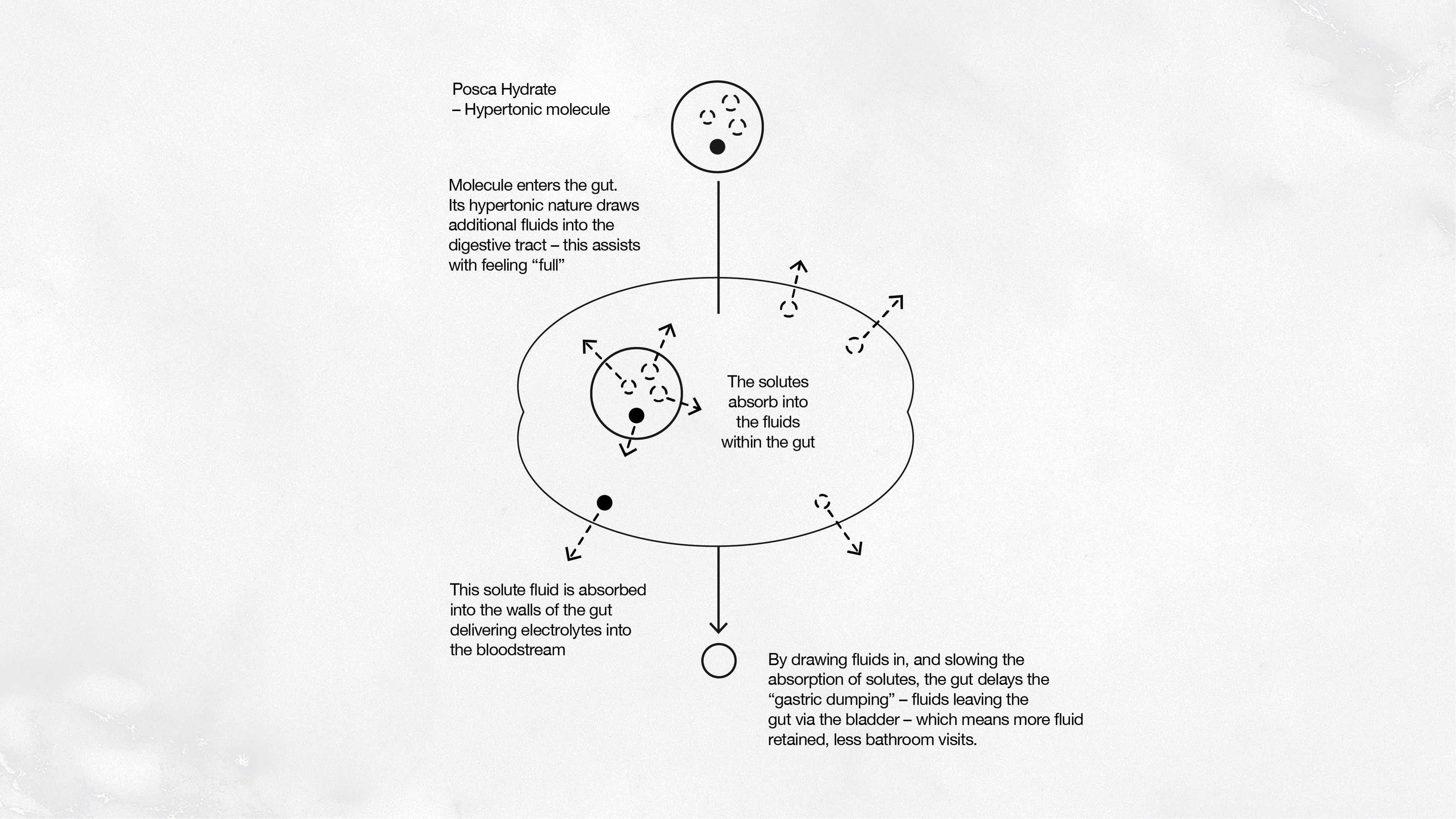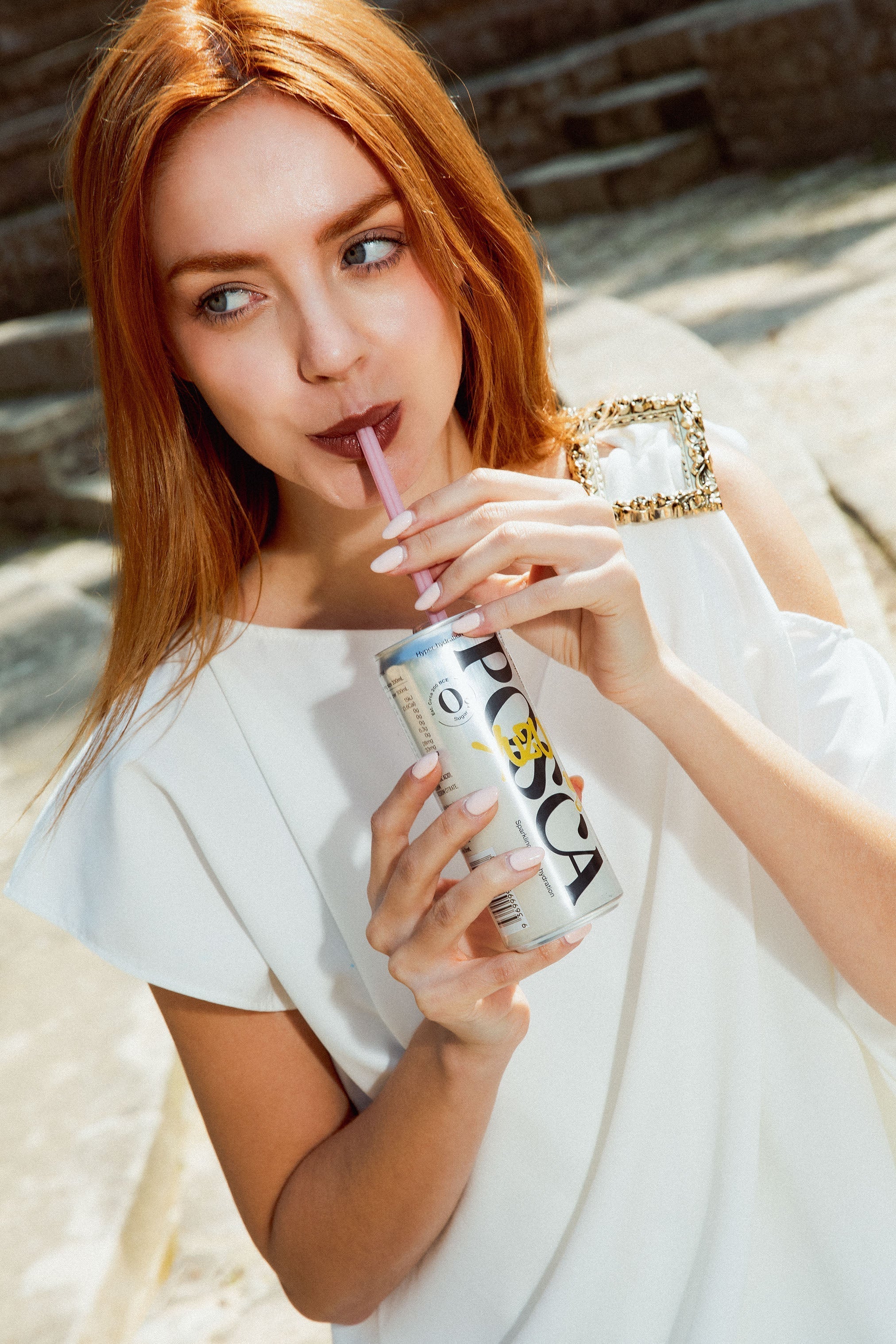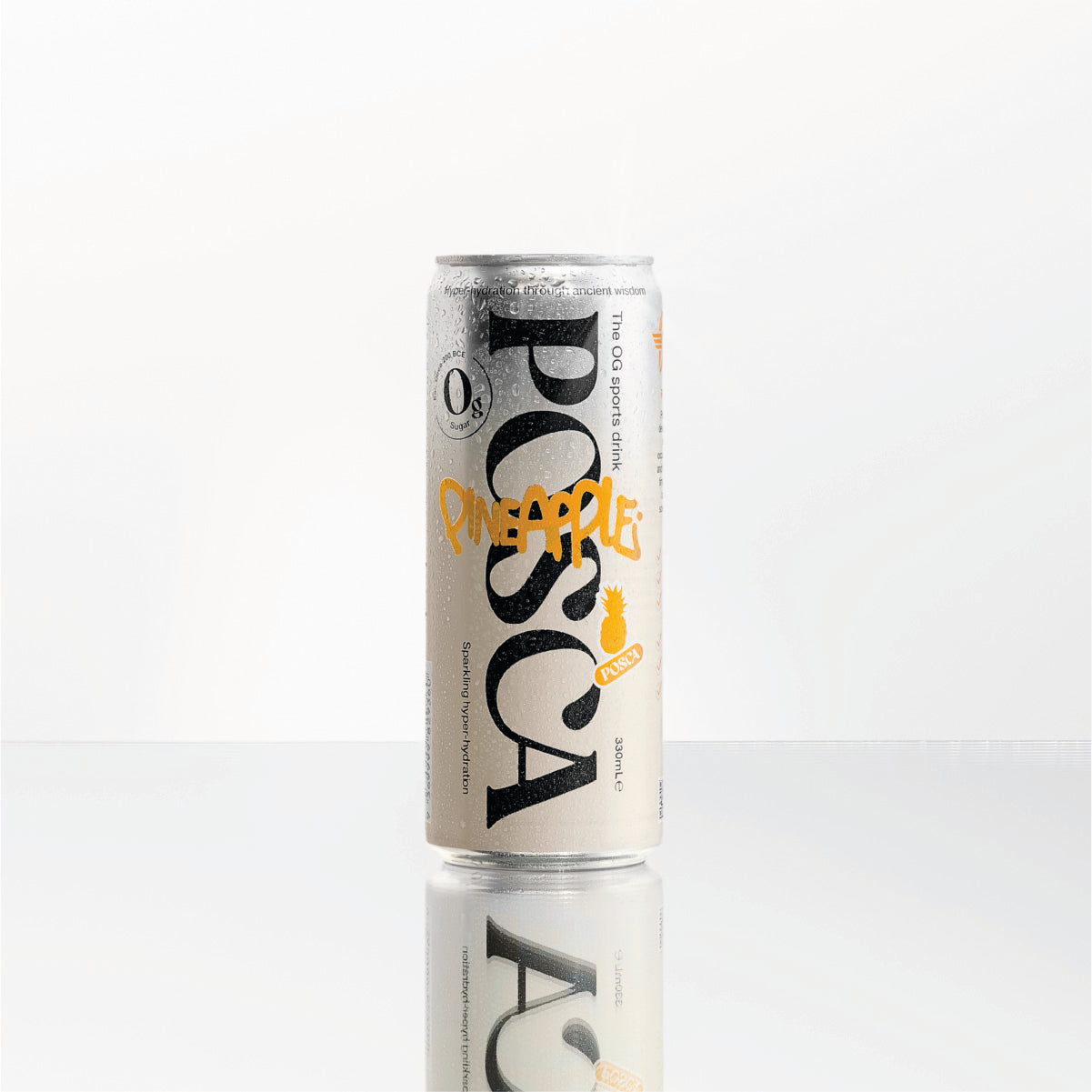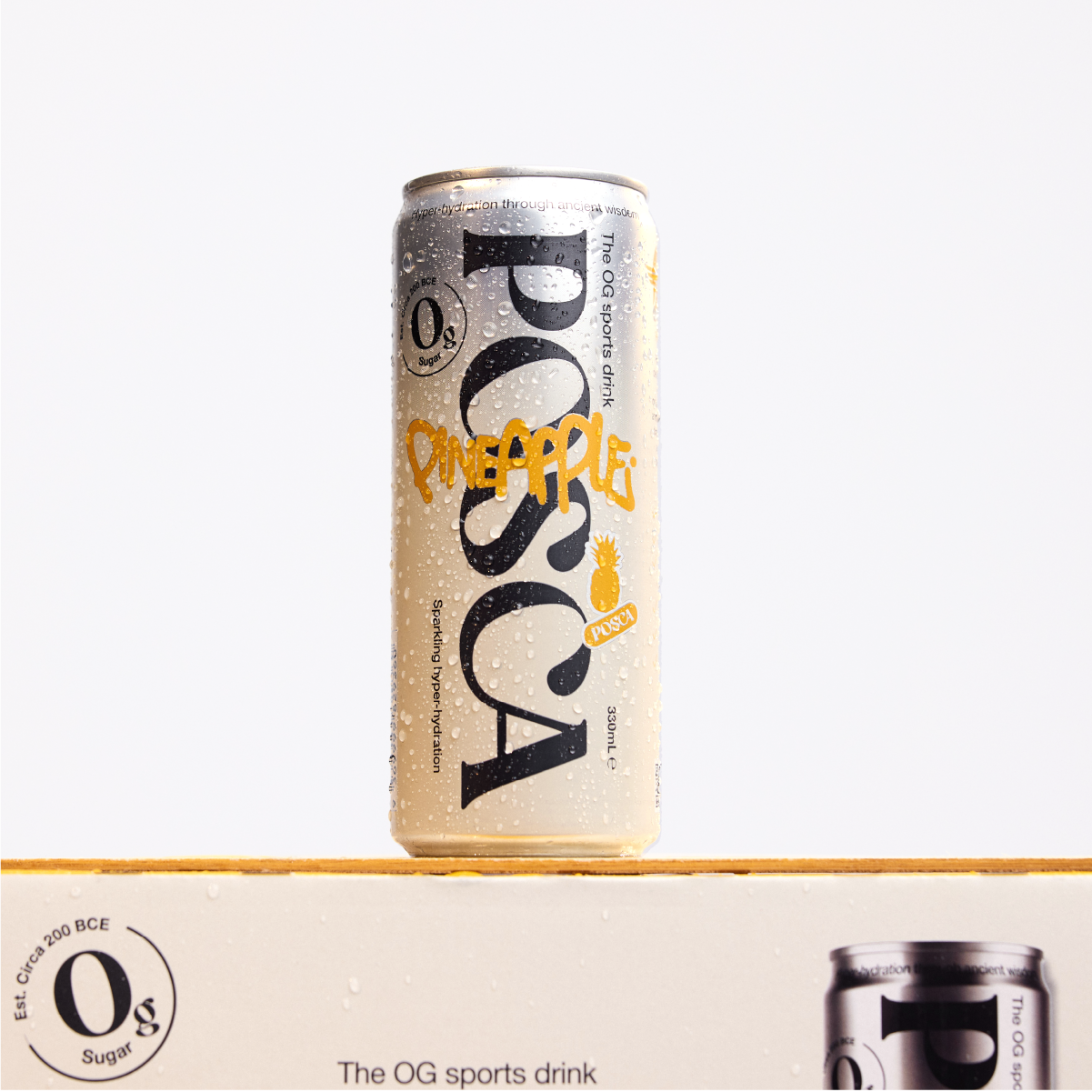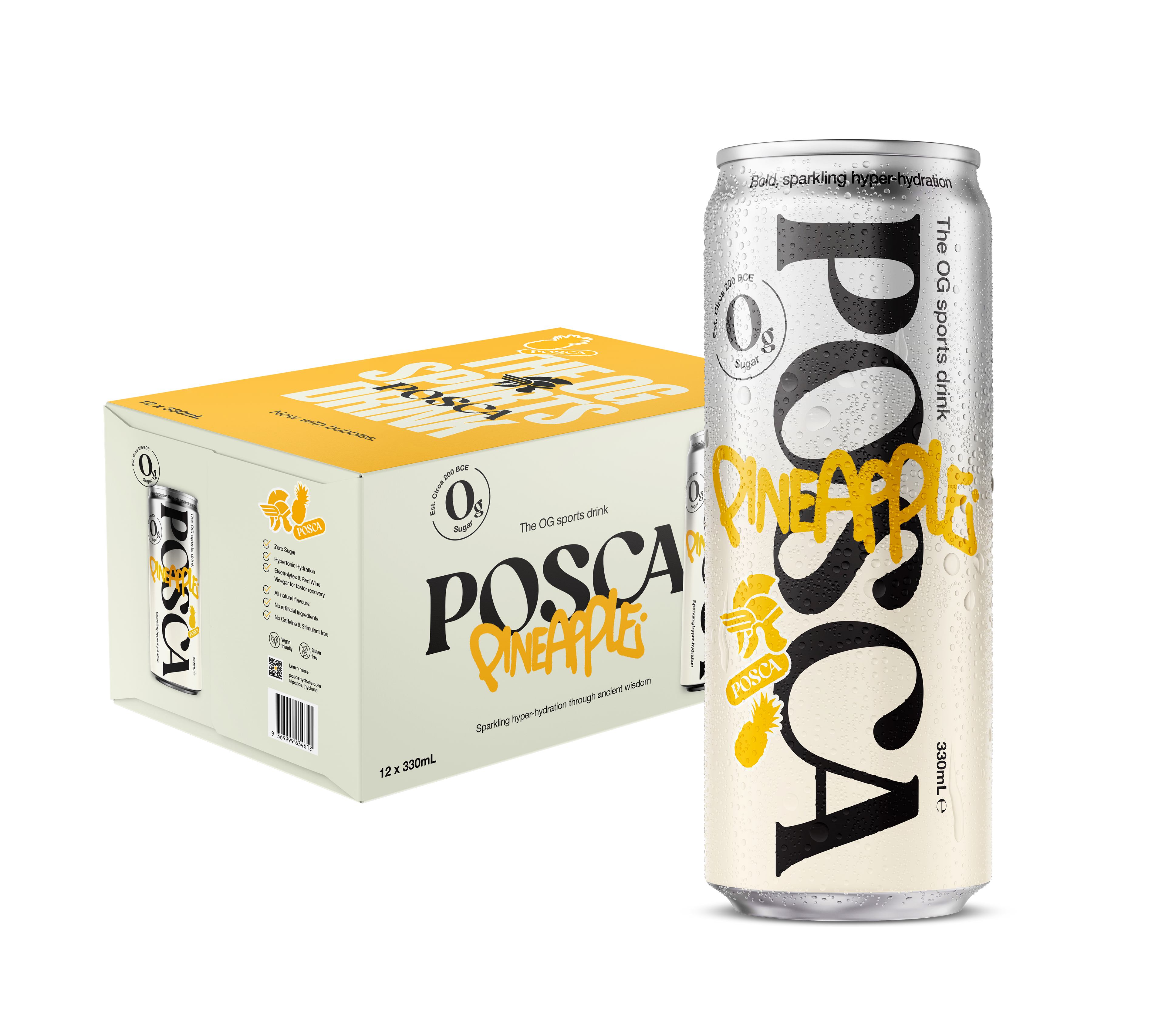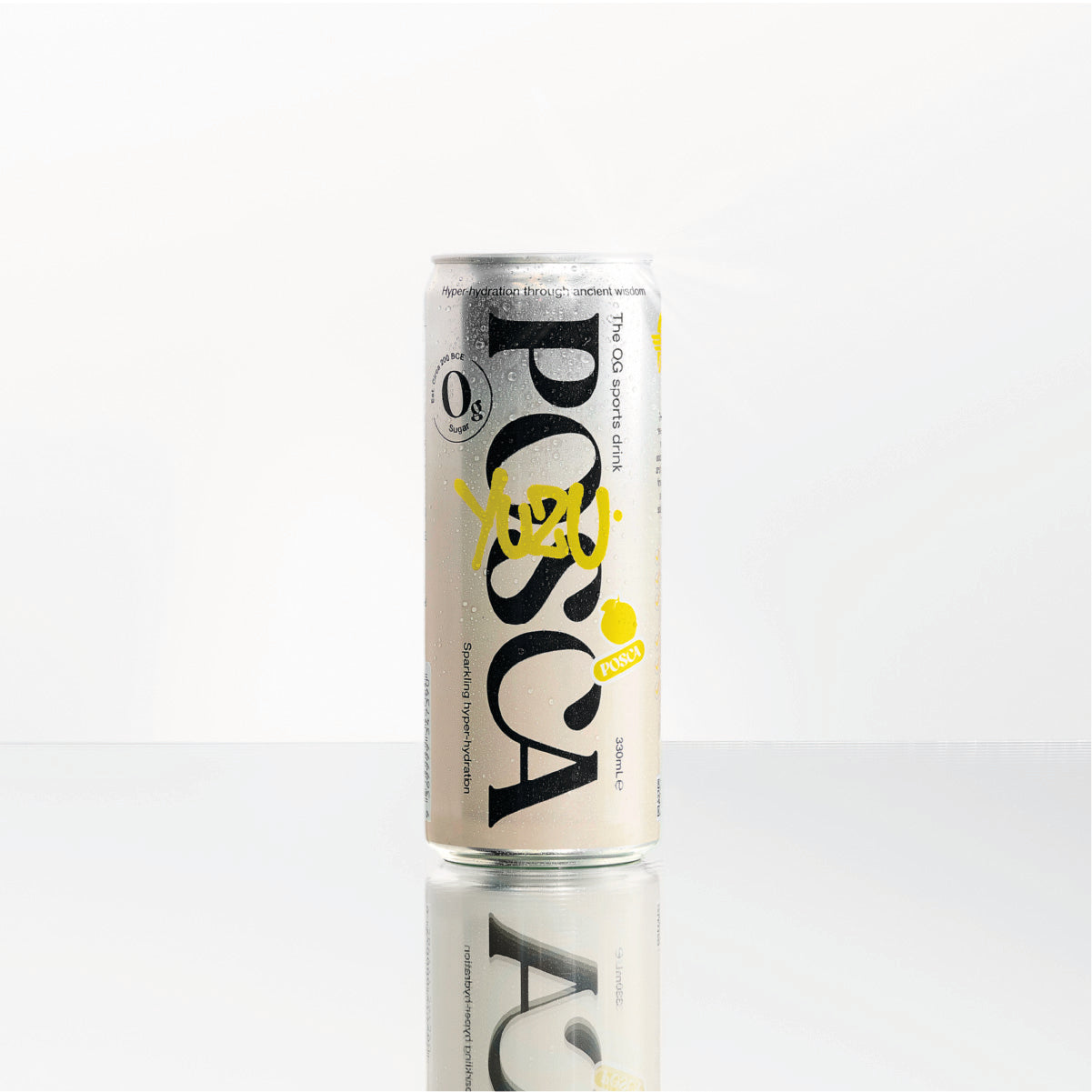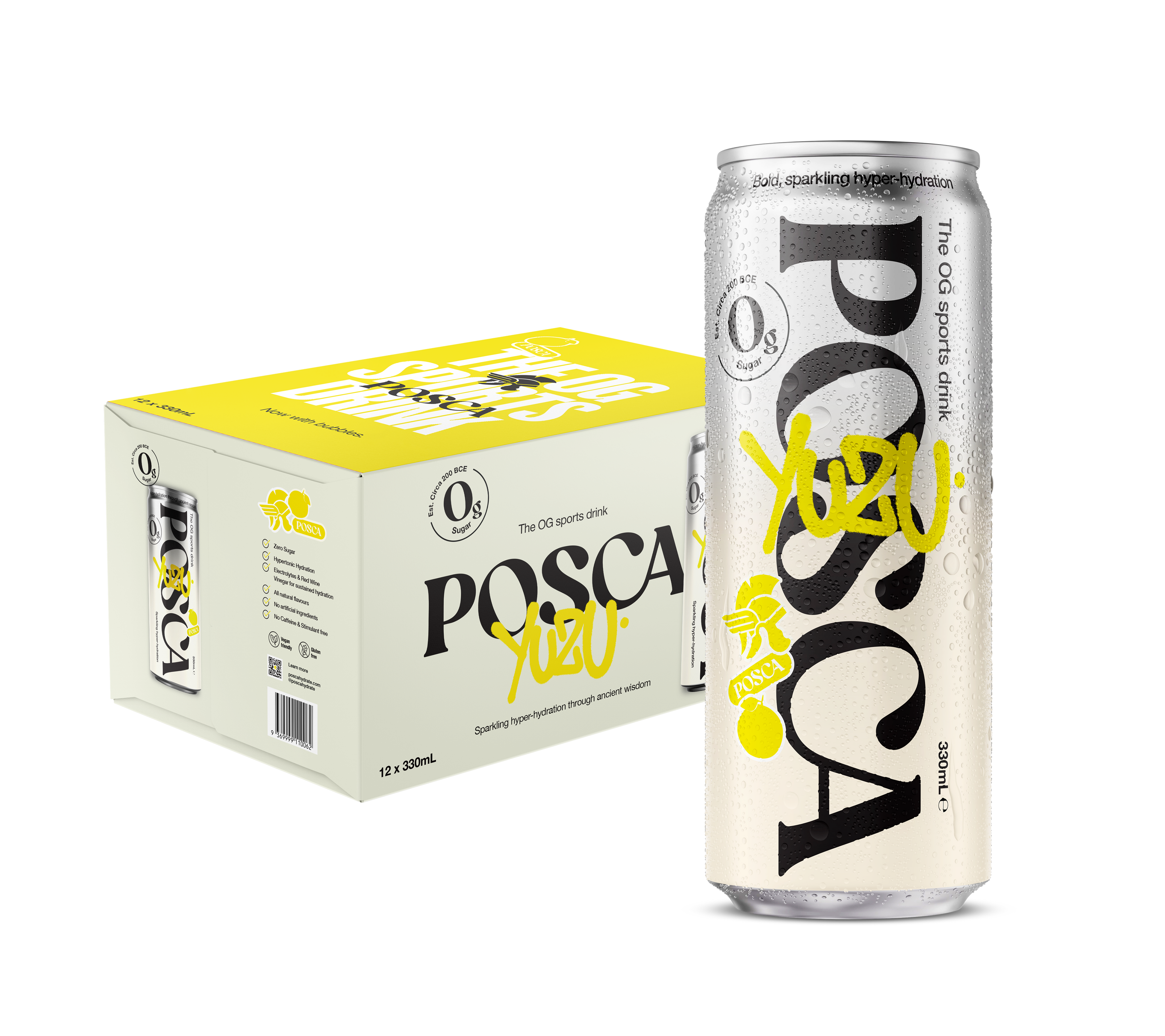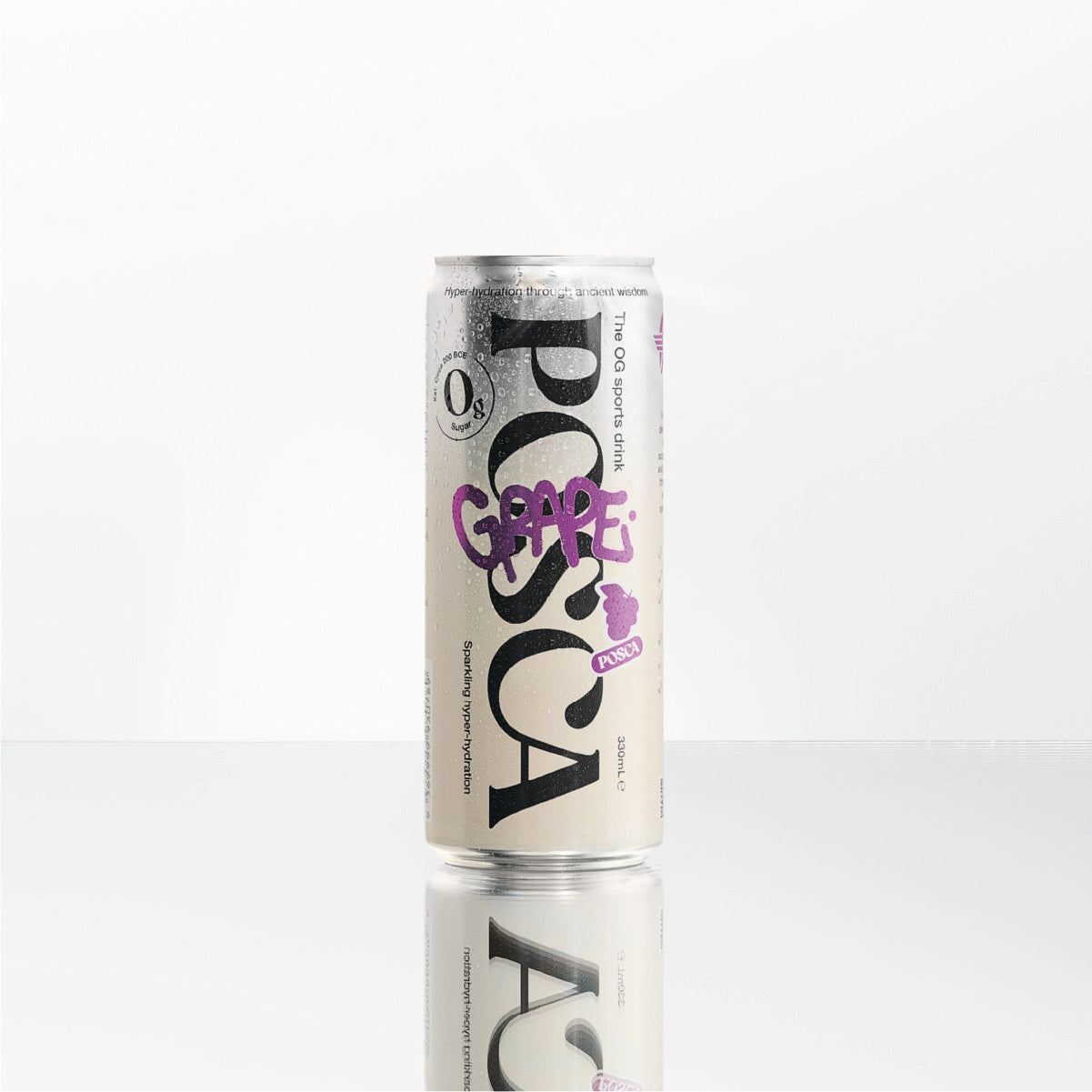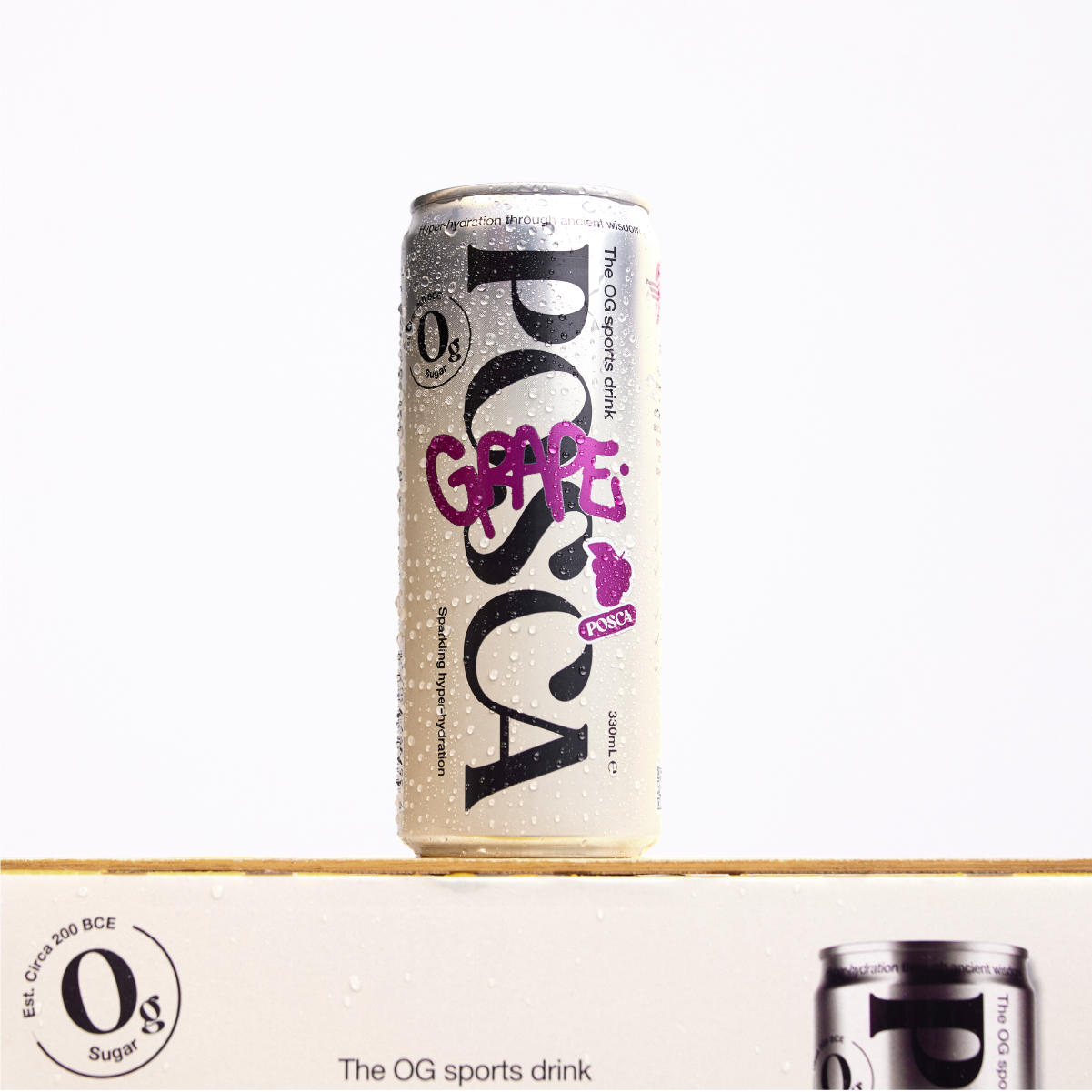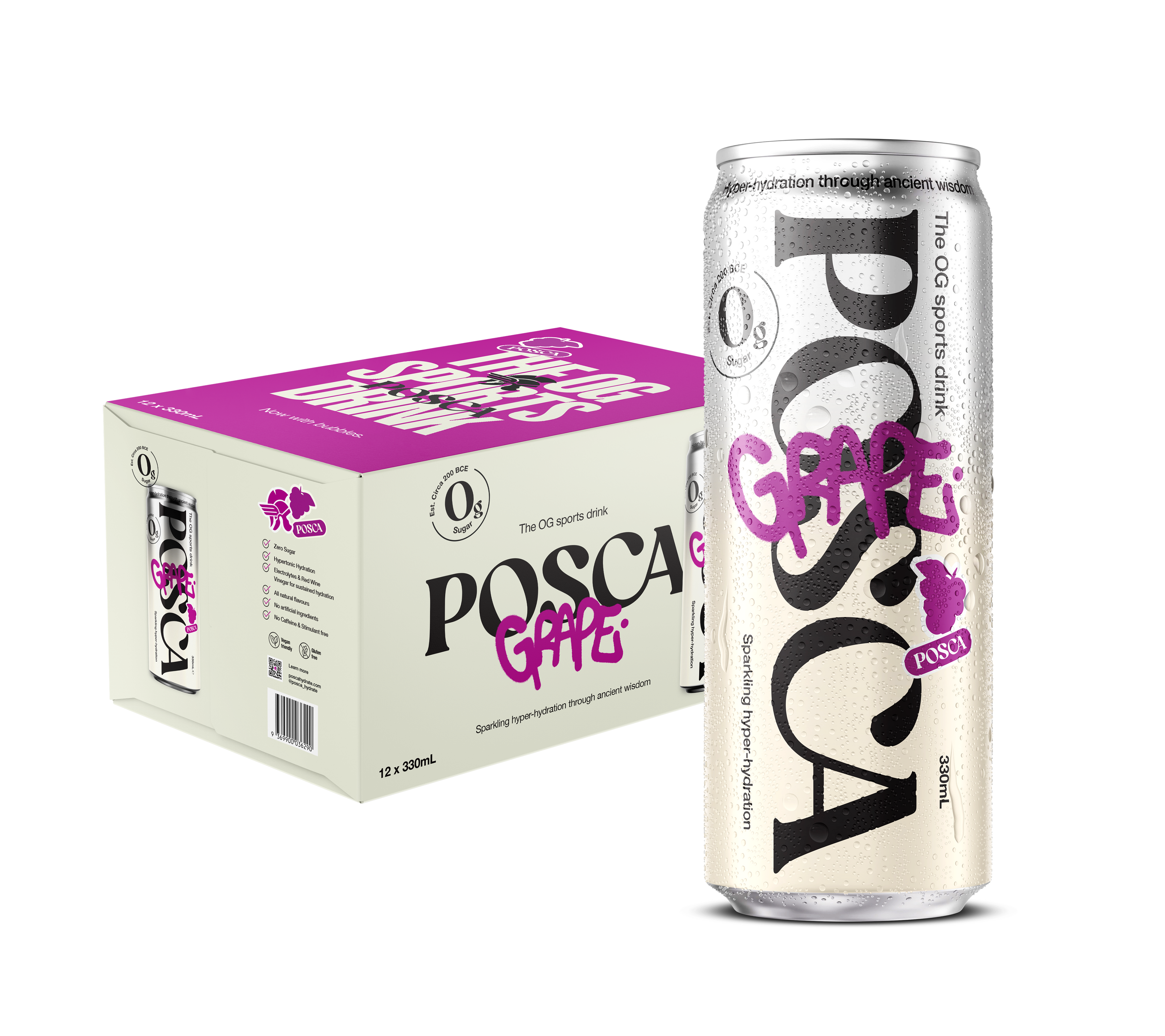Tonicity in fluids is a measure of the number of solutes dissolved in the fluid. For instance, sea water has higher tonicity to rainwater because of the salt dissolved in it.
When referring to tonicity, it is often compared to a reference point and the following terms are used:
- Hypotonic – less solutes than reference
- Isotonic – same number of solutes as reference
- Hypertonic – higher number of solutes than reference
It’s important to understand that the type of solute is less important than the quantity of it when discussing tonicity.
For instance, you can have two different fluids of the same tonicity, one of which containing salt as the solute and the other containing sugar. It can be appreciated that when it comes to drinks for human consumption a salty drink will have different effects on the body than a sugary one, despite the tonicity of the drinks being the same.
When discussing tonicity of drinks for human consumption, the reference point used is known as osmolality. For simple purposes in discussing drinks, tonicity and osmolality can be used interchangeably.
The osmolality of human blood and tissues is approximately 290 mOsmol/L (milliosmoles per litre). Using that reference point, drinks can be categorised in the following fashion:
- Hypotonic: <280 mOsmol/L – for example water or very dilute cordial
- Isotonic: 280-300 mOsmol/L – for example sports drinks labelled as isotonic
- Hypertonic: >300 mOsmol/L – for example fruit juices, beer, and energy drinks such as Red Bull.

The tonicity / osmolality of a drink is one factor that impacts the rate at which it is absorbed from the digestive system after it is ingested.
Other factors that impact absorption rates include the temperature of the drink, ingestion rate, and the particular solutes contained in the drink. High exercise intensity can also decrease fluid absorption rates due to decreased blood flow to the digestive tract in that context.
Some solutes, such as sodium and sugars, can independently increase the absorption rate of a drink by activating receptors in the lining of the digestive tract. Otherwise, absorption rates are driven by osmotic gradients between the inside of the digestive tract (where the fluid ends up after drinking) and the blood and fluids of the body (where it needs to be absorbed for hydration).
Studies show that isotonic drinks (and slightly hypotonic drinks) have faster absorption rates due to their similar osmolality to blood and body fluids allowing rapid movement into the system. The inclusion of sodium and sugar in isotonic preparations further enhances absorption, hence these solutes being commonly found in drinks marketed as sports drinks. These drinks are best used during exercise for the rapid replacement of fluids lost and the maintenance of hydration.
Studies into hypertonic drinks suggest that they are absorbed in a slower and more sustained fashion than hypotonic or isotonic drinks. Due to their relatively high solute concentrations, hypertonic drinks can have the initial effect of drawing fluid from the body into the digestive tract to dilute the gut contents before sustained absorption. This delayed gastric emptying rate can promote increased feelings of satiation (fullness) after drinking hypertonic fluids, which may aid with appetite suppression.
From a nutritional perspective, the specific solutes that make a drink hypertonic make a difference. Hypertonic drinks such as soft drinks and fruit juices have high sugar contents which, when absorbed, have high calorie content and can cause unhealthy spikes in blood sugar.
Posca’s solutes consist of electrolytes and red wine vinegar which promote its sustained hydrating and electrolyte replenishment profile, without the unhealthy sugar content of other hypertonic drinks, and with the added health benefits conveyed by red wine vinegar.
As a rough analogy, hypertonic drinks can be thought of as akin to “low GI (glycaemic index)” carbohydrates.
GI is a scale used for the rate at which carbohydrate ingestion impacts blood sugar levels. High GI foods, such as lollies and sugary drinks, cause a rapid increase in blood sugar levels followed by a crash back down to normal levels. Low GI carbohydrates, such as oats, grains, and starchy vegetables, cause a slower and more sustained rise in blood sugar levels without the dramatic peaks and troughs seen in their high GI counterparts.
Posca’s hypertonic nature allows for a sustained hydration profile, minimising the negative effects of more rapid hydration, which can result in increased loss of fluid and electrolytes through increased urine production.
References
- Rowlands DS, Kopetschny BH, Badenhorst CE. The Hydrating Effects of Hypertonic, Isotonic and Hypotonic Sports Drinks and Waters on Central Hydration During Continuous Exercise: A Systematic Meta-Analysis and Perspective. Sports Med. 2022 Feb;52(2):349-375.
- Ly NQ, Hamstra-Wright KL, Horswill CA. Post-Exercise Rehydration in Athletes: Effects of Sodium and Carbohydrate in Commercial Hydration Beverages. Nutrients. 2023 Nov 12;15(22):4759.
